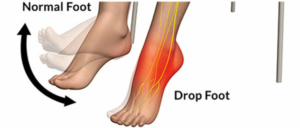 Being examined is essential when beginning care in any doctor’s office. In my office, it is non-negotiable, although plenty of potential clients call with the belief that they “just need an adjustment.” While this may be so, it may also not be so, as the story I am about to disclose will show. But I will begin by saying that doctors are there to help you and do no harm. Any doctor who is willing to provide you care without a complete examination is taking a huge risk with regard to your health, and it would behoove you as the patient to be aligned with getting one. No matter what you have or have not had in the past, good protocol is for each new doctor to get his or her eyes on you and perform an examination.
Being examined is essential when beginning care in any doctor’s office. In my office, it is non-negotiable, although plenty of potential clients call with the belief that they “just need an adjustment.” While this may be so, it may also not be so, as the story I am about to disclose will show. But I will begin by saying that doctors are there to help you and do no harm. Any doctor who is willing to provide you care without a complete examination is taking a huge risk with regard to your health, and it would behoove you as the patient to be aligned with getting one. No matter what you have or have not had in the past, good protocol is for each new doctor to get his or her eyes on you and perform an examination.
Several months ago on a warm Spring night, I received a phone call from a prospective patient asking if I could see him right away. Being a Saturday evening, I was with my kids and couldn’t step away.
“Can it wait til Monday?” I asked.
“I’m in a lot of pain; I don’t think so…,” he said.
Ok, I can come in tomorrow, Sunday, and take a look.
During the conversation he told me he used to be the patient of a famous doctor, an osteopath, in Colorado, the state he just drove from to California in a big work truck for a big job in West Hollywood. Had I heard of him, he asked. I hadn’t and I can no longer remember the doctor’s name off the top of my head. The prospect told me this doctor had seen him in the past for this exact situation he was in – low back pain centered in his buttock and radiating into his thigh – and he simply gave the pelvis a “good crack” and the pain would go away. For years usually. Unfortunately, this famous doctor was now deceased, and anyway, the prospect was now in California, but he was sure that if I could do the same, he would be better straight away.
I said, “Ok, I’ll try…come in tomorrow and we’ll see. What we can do.”
The next day he was waiting at my office when I arrived. I could see that he was stiff while getting up to shake my hand. When we got back into the examination room, I asked him to tell me what was happening. He told me that he had driven from Colorado to work on a big construction job for a West Hollywood hotel. He was feeling fine until he arrived in Los Angeles on Friday, then his back started to act up. Friday it was bearable, but he woke up Saturday with serious pain. Again, he told me his previous doctor would simply “move it back into place” and it usually solved the problem.
“Ok so you have had this before. And the pain going down your leg?”
“Yes, I have had this too but that usually goes way with the adjustment as well. But it’s not really the pain as much as I’m having difficulty walking.”
“In what way?”

“I can hardly bend my foot…” he says as he tries to demonstrate dorsiflexion, which is pulling the foot upward toward the head.
“I see,” I said as we proceeded with the examination. He told me one more time about how the adjustment would likely clear things up, and I said we’d see. During the exam, he had trouble bending forward, backward, and lifting his knee toward his chest. He did not have pain on any spinal segment when I palpated, but lifting his foot headwards was difficult, and doing the same movement with his big toe was impossible.
When it was time to treat the patient, I had him lie face down and started to work the muscles in the low back region. He was tight, or what we call hypertonic in bodywork speak, with numerous trigger points. The myofascial work drew blood to the area, rapidly, telling me this guy had not had great circulation to this region in quite some time. He reported the muscle work as “sore but in a good way,” as I kept working. When it was time to adjust him, I put him on his side and set up. My intention was to just take his pelvis to end range to see if it would release. It did not. I gave it light pumps. Nothing.
I turned him over to the other side and tried the same with his lumbar spine. We got the same results. I was not discouraged in any way because there are generally two reasons why a segment or joint will not release: the patient is in too much pain to allow the proper locking out of and thrust on the joint or it simply does not need to move. That’s it. Extra force does not need to be administered – if it does not go, it will not go (that’s a little over-simplified, but it’s about seventy five percent of situations). So, I was not worried. He said he felt a bit better, and I told him to go back to his hotel and rest. I let him know he would have to come back the next day, Monday.
He was my first patient of the day, and I noticed when I walked into the waiting room that he was seated but holding crutches.
“You haver crutches?”
“Yes, I can barely walk.”
We went back to the treatment room. He told me that he was fine after the treatment yesterday, but that this morning he woke up and tried to get out of bed and nearly fell to the floor. He said he simply could not move his foot or big toe, and the result of this was a severe loss of balance. His back did not hurt at all, but he did have some pain traveling into his leg. And again, he sort of lamented that if we could just move his pelvis, that would do it. Works every time.
I said, “Listen, even if we get the biggest release on you possible, that is not going to fix this.”
“What do you mean?”
“This isn’t that type of situation. I am very concerned about your inability to move your foot, your toe, and your inability to keep your balance. That is not a simple situation and I think we need to get you over to a neurologist. I have one I work very closely with and am going to call right now and see if we can get you in.” I set him up on the table and told him I would be back shortly.
I put in a call to the neuro. His office said that if my patient could be there in fifteen minutes, the doctor would be able to see him. Shoot! I moved quickly and told the patient to get up and get moving to the neuro’s office, easily ten minutes away. “Ok, ok,” he says, “just let me go to the bathroom.”
“No! Go now. Get there and use the bathroom at the neuro’s office. It’ll take you ten minutes just to get through with the toilet. No time to waste. Go and let me know what happens.” I sent him packing with all the relevant paperwork. He hobbled to his truck, threw in the crutches, and slowly squeezed into the cab. He was off. Oh boy, let’s see what this turns into…
Within an hour I receive a call from the neurologist, “Dr. Campos, thank you for sending this patient to see me. It is a good referral. He needs an emergency MRI, and he will likely need immediate surgery. I will keep you informed.”
 I did not hear anything for the next couple of days so on Thursday afternoon, I gave the patient a call. “Hey, you sound vibrant, what happened?” The patient told me he went to Kaiser where he had insurance. They initially told him in the ER that he did not need any diagnostic imaging, which shocked him and he told them so. He said, “B*llsh**, I have a doctor’s letter right here that says I do…”
I did not hear anything for the next couple of days so on Thursday afternoon, I gave the patient a call. “Hey, you sound vibrant, what happened?” The patient told me he went to Kaiser where he had insurance. They initially told him in the ER that he did not need any diagnostic imaging, which shocked him and he told them so. He said, “B*llsh**, I have a doctor’s letter right here that says I do…”

“Oh so you do,” they acknowledged; they got him into a CT scan immediately and saw a blood clot in the L3 disc but they needed to open the area immediately. He went into surgery Tuesday afternoon.
The patient relayed that the surgeon said when he cut into the L3 region, blood just came “pouring out.” Apparently, according to the surgeon, somehow on the drive from Colorado, the patient tore a blood vessel in his low back. During the trip, the vessel developed a clot to plug the wound, and as it grew, it began to push onto the L4/L5 nerve root, causing the foot drop. Foot drop, as I knew, needs to be addressed within 48 hours to avoid permanent weakness in the foot.
“Holy mackerel…and so everything went well?”
“Yes, the surgeon said I was lucky to have gotten to it right away. Now I just allow my body to heal and start rehab in a couple weeks.” He told me he was actually back on the job and would be back in Colorado to have a follow up with a neurologist and begin therapy.
Great. I was happy things worked out. Now this patient was not one to say he did not need an exam but believe me plenty have tried. No, he was open to it, but this client was a perfect example of someone who though he knew what he was dealing with. He trusted me, thank goodness; but so many people have tried to bypass the exam with just an adjustment. Some even get pissed on the phone and tell me where to stick it. They go elsewhere. It’s frightening to think that they probably could find a place to get what they want. For this client that would have ended in disaster.
It is important to remember that things are not always as they seem, especially when it comes to the human body. Even if it feels like you have felt a particular way before, it is better to get a full workup anytime you have a new incident physically. Even if it is with your regular doctor; he or she should be ready to perform a reexamination whenever you come in with a newish complaint. I did not know this patient’s famous doctor; I am sure he was outstanding at what he did. He very likely would have performed an exam as well, ultimately sending his patient to a neurologist or ER. And I hope your doctor would do the same. But for you, whether you are looking for a new doctor for an old problem, or if you are traveling and need somebody on the fly. Be prepared to be interviewed and examined, and please don’t expect to get in-and-out with a quick adjustment unless that is what the doctor recommends…after she checks you out completely. That is the best care you can receive.

